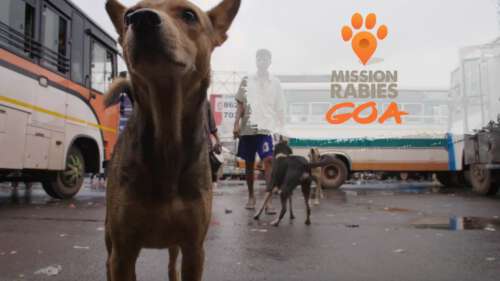
Mission Rabies Goa – Chapter 3: What We Will Be Doing

As the date approached, I began receiving occasional e-mails from the Mission Rabies volunteer coordinator detailing the finer aspects of the mission. For example, we were gently reminded that many of Mission Rabies’s projects take place in warm countries, so that we should avoid risks like sunburn, heat stroke, or heat exhaustion. I looked up, on the internet, the average temperature in Goa in October. The typical high is 88 or 89 degrees; the low is around 79 degrees. I love warm weather, and summer is definitely my favorite season, but I know that India can be stiflingly humid, and that this mission requires a decent amount of walking. I do cardio exercise every day, and this summer in New York City has been brutal, so I’ve had good preparation.
The Mission Rabies volunteers will be divided into teams of 6 to 8 people. The teams include international volunteers like myself, along with Mission Rabies staff and local staff. Every team will have a vehicle, and will be assigned a geographic area in which we will work. Teams will consist of one team leader, most likely an experienced Mission Rabies staff member. They run the show. There will be one or two vaccinators. These can be veterinarians, veterinary nurses, or veterinary students. (I assume that this will be my role.) There will be one data collector who enters all the data into the Mission Rabies app, and one “painter” who marks the vaccinated dogs (ideally on the top of the head, or down its back) so that they can be easily identified as having been vaccinated. Finally, there will be two to four local dog handlers. They are local staff that are trained to catch dogs in butterfly nets quickly and humanely, and they are the ones who hold the captured dogs for their vaccination and painting. Once vaccinated and marked, the dog will be released gently and quietly.
Each team will carry equipment with them in the field, namely, a cooler, ice packs, a rabies vaccination kit bag, syringes, needles, sharps container, trash bag, vaccination cards (to be given to owners of pet dogs that we vaccinate), wrist bands, educational leaflets, basic veterinary drugs, and a first aid kit for humans. Within 24 – 72 hours after vaccination in a particular ward (area or district of the city), a post-vaccination survey will be performed and completed by local staff. This is done to estimate the proportion of animals in a ward that have been vaccinated. The goal is to vaccinate 70% of the dogs in the area, as this is the percentage shown to eliminate rabies from an area.
We were also reminded of local Indian laws to which we should pay heed.
Drug use/smuggling is illegal, including marijuana. Penalties can be severe and the legal process (including pre-trial detention) is lengthy. It is illegal to buy, sell, kill or capture any protected wild animal or trade its parts without a license. India is a signatory to the Convention on International Trade in Endangered Species of Wild Fauna and Flora (CITES). Purchasing or tracking such goods can lead to fines or imprisonment. I don’t smoke pot, and the thought that I would do anything detrimental to any wildlife is pretty ludicrous. They also warned that homosexuality is illegal in India, although prosecutions are rare. This warning needs to be amended, as India very recently decriminalized homosexuality. Also, photography of government buildings, airports, military or police buildings or personnel, airports and railways stations can be misunderstood and should be avoided. We were also given a list of items that we should consider bringing with us, for example, insect spray, mosquito netting, sunscreen, a flashlight, a raincoat, etc. I went ahead and gathered up items that I already had, and purchased a few that I was lacking. I am ready to go. I cannot wait to begin.
Next Post – Chapter 4
I am delighted to announce that in February 2020, I will once again be joining a team of Mission Rabies volunteers on another vaccination drive. The destination: Ghana! Our intention, as always, is to vaccinate as many dogs as possible, with a goal of immunizing 70% of the dog population. At this level of immunity, the rabies cycle is broken. To do this type of work is expensive and requires many resources. If you support the work that I am doing with this amazing organization, I ask that you make a donation to the cause. Every dollar helps.

